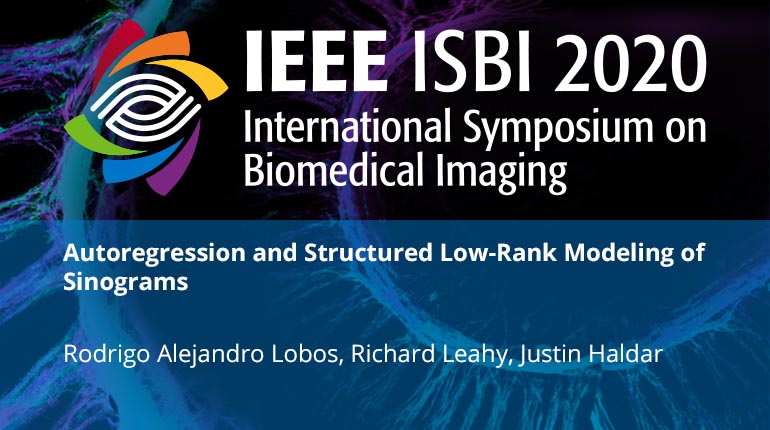
Already purchased this program?
Login to View
This video program is a part of the Premium package:
Autoregression and Structured Low-Rank Modeling of Sinograms
- IEEE MemberUS $11.00
- Society MemberUS $0.00
- IEEE Student MemberUS $11.00
- Non-IEEE MemberUS $15.00
Autoregression and Structured Low-Rank Modeling of Sinograms
The Radon transform converts an image into a sinogram, and is often used as a model of data acquisition for many tomographic imaging modalities. Although it is well-known that sinograms possess some redundancy, we observe in this work that they can have substantial additional redundancies that can be learned directly from incomplete data. In particular, we demonstrate that sinograms approximately satisfy multiple data-dependent shift-invariant local autoregression relationships. This autoregressive structure implies that samples from the sinogram can be accurately interpolated as a shift-invariant linear combination of neighboring sinogram samples, and that a Toeplitz or Hankel matrix formed from sinogram data should be approximately low-rank. This multi-fold redundancy can be used to impute missing sinogram values or for noise reduction, as we demonstrate with real X-ray CT data.
The Radon transform converts an image into a sinogram, and is often used as a model of data acquisition for many tomographic imaging modalities. Although it is well-known that sinograms possess some redundancy, we observe in this work that they can have substantial additional redundancies that can be learned directly from incomplete data. In particular, we demonstrate that sinograms approximately satisfy multiple data-dependent shift-invariant local autoregression relationships. This autoregressive structure implies that samples from the sinogram can be accurately interpolated as a shift-invariant linear combination of neighboring sinogram samples, and that a Toeplitz or Hankel matrix formed from sinogram data should be approximately low-rank. This multi-fold redundancy can be used to impute missing sinogram values or for noise reduction, as we demonstrate with real X-ray CT data.
 Cart
Cart Create Account
Create Account Sign In
Sign In





